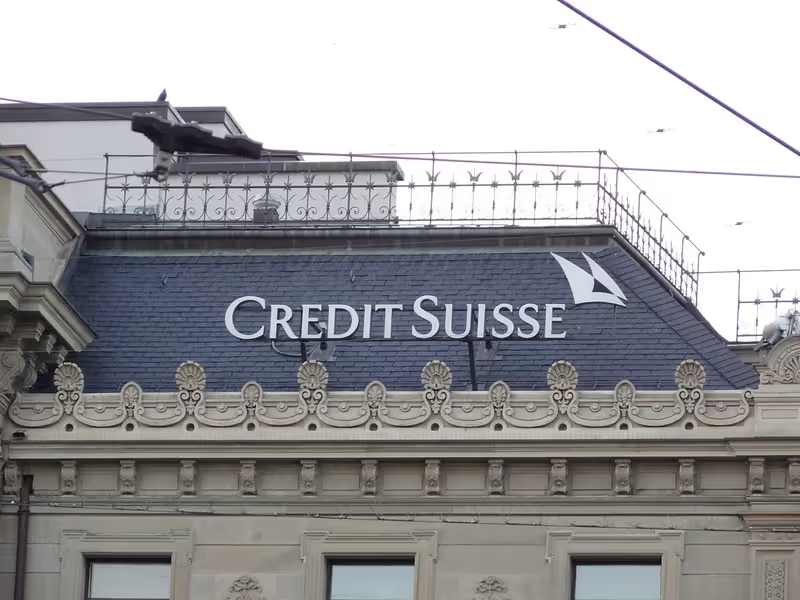Risk of AT1 bonds? What consequences the Credit Suisse crisis could have

Negative press releases about Credit Suisse have been piling up for months. For example, in October 2022, when there was already speculation about an increased credit default risk on the part of the Swiss bank. The supporting measures taken by the Swiss central bank in combination with the UBS takeover of Credit Suisse have calmed down the financial market somewhat. But a sub-segment could now face a complete revaluation. This is the still relatively young market for so-called additional tier 1 bonds, also known as “CoCo bonds” or “AT1 bonds.” Ironically, they were developed after the financial crisis of 2007/2008 to make banks more resilient — but in the current environment they could do more harm than good.
Credit Suisse: What happened?
The issue of AT1 bonds is directly related to the Credit Suisse crisis. Because with the emergency takeover by UBS, Credit Suisse COCO bonds have become virtually worthless. But how could this happen?
First of all, Credit Suisse's (largely homemade) problems are not new. As early as 2014, Credit Suisse pleaded guilty to a US tax evasion case. She was accused of helping wealthy Americans evade taxes. As a result, CS agreed to pay a fine of 2.6 billion dollars to the US authorities. This was followed by various fines due to money laundering, criminal customers and bribe scandals. However, Credit Suisse was hit particularly hard by the collapse of British-Australian financial services provider Greensill Capital in March 2021, as the bank had invested billions in Greensill. Following bankruptcy, CS closed four funds associated with Greensill, in which ten billion dollars were invested. Only a short time later, Credit Suisse suffered losses of around five billion dollars as a result of the collapse of Archegos Capital Management, a family office that engaged in risky transactions with borrowed money.
As a result, Credit Suisse had to make far-reaching restructuring and management changes to regain investor confidence and improve its financial control and balance sheet. But the reputation of the Swiss bank had already suffered so much that more and more customers were withdrawing money. In the fourth quarter of 2022 alone, there were net outflows of 110.5 billion francs (112.1 billion euros). In March 2023, major shareholder Saudi National Bank finally announced that it would no longer be able to bring in fresh money, as the institution could not hold more than ten percent of Credit Suisse for regulatory reasons. This plunged CS into huge liquidity problems.
At first, the financial market supervisory authority and the central bank in Switzerland held back. In the end, however, the Swiss National Bank had to lend Credit Suisse around 50 billion francs a hand, and in the end, all that remained was bailed out by competitor UBS, which took over CS for three billion francs.
AT1 bonds: revaluation of the entire asset class?
The financial markets were somewhat calmed down as a result. But the market for so-called additional tier 1 bonds (AT1 bonds) is in turmoil, as holders of Credit Suisse COCO bonds worth a total of 16 billion francs are facing total loss. This is because the securities will be written off in full as part of the takeover by UBS on the orders of the Swiss banking supervisory authority Finma - even though CS shareholders still receive around three billion francs in the form of UBS shares.
To the Investors with the largest holdings of Credit Suisse AT1 bonds belong to the Alliance fund subsidiary Pimco. The value of the securities held by the asset manager is allegedly 807 million dollars. Pimco also holds Credit Suisse senior bank bonds worth almost three billion dollars.
According to media reports, asset manager Invesco accounts for around 370 million dollars of Credit Suisse AT1 securities. Blackrock's AT1 commitment amounted to around 113 million dollars at the end of February.
Bonds sometimes offered attractive returns, especially in times of low interest rates. This is because a bond is in principle a fixed-interest security which securitizes a debt claim to payment of the interest set in the bond and the repayment of the nominal value at the end of the term. However, the range of bonds available ranges from solid investments with lower bond interest rates to highly speculative and extremely risky bonds with a yield that can sometimes be in the double-digit range.
The latter category includes AT1 bonds. These are convertible bonds that depend on a specific event, the so-called trigger — for example, a fall in a bank's equity ratio. At that moment, the bank's borrowed capital is automatically converted into equity.
The possible forced conversion into equity does strengthen banks' resilience - but at the expense of bondholders, who are worse off in the event of a crisis, as they become shareholders as a result of the conversion. Because they are in any case inferior to other bondholders, AT1 bonds are also counted as subordinated bonds.
More and more banks have issued COCO bonds in recent years. As a result of the financial crisis, banks' capital requirements have increased significantly, meaning that they must strengthen their core capital and buffer capital. According to the ever stricter capital requirements under Basel III, banks are also forced to insure themselves in case of crisis and can remain flexible with the help of these products despite protection. In addition, AT1 bonds can be used to impose losses on creditors instead of having to resort to tax money when banks get into trouble.
However, the Credit Suisse case is particularly precarious for the entire asset class, as it is the first time that creditors of a subordinated bond are placed worse off than shareholders. This precedent could be set at around 250 billion euros estimated AT1 market plunge into severe turbulence — and have another “domino effect” on financial markets.



